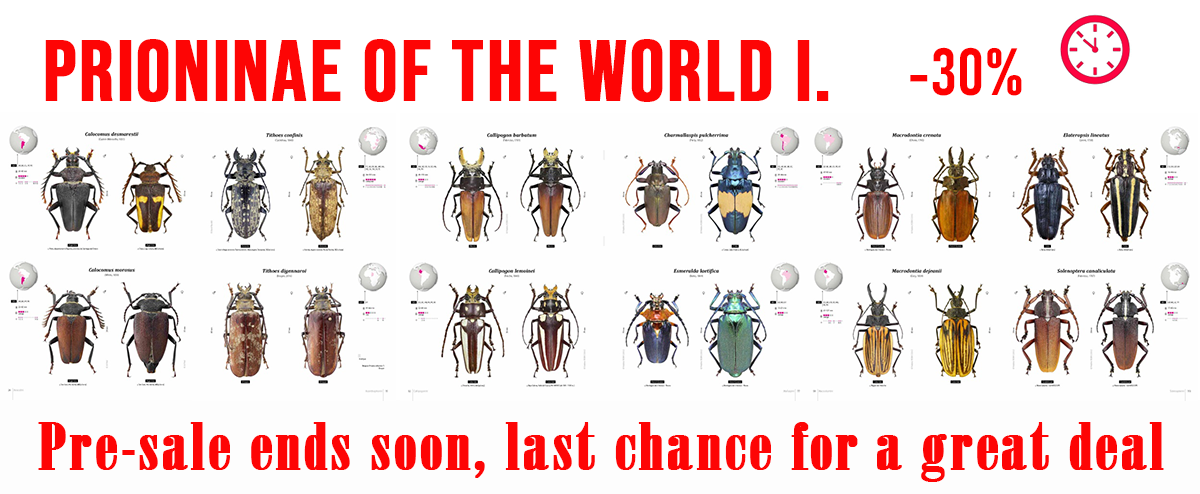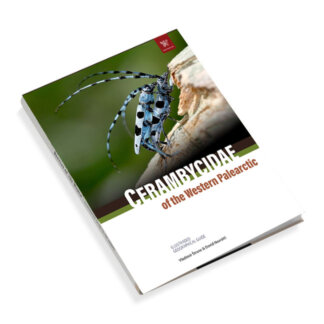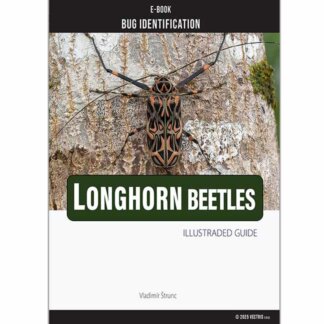Unique pictorial atlases for identifUnique pictorial atlases for identifying Beetles. The Buprestidae is one of the most remarkable and diverse govered in various shades of green, blue, red and gold, allowing them to blend in perfectly with their surroundings.
-
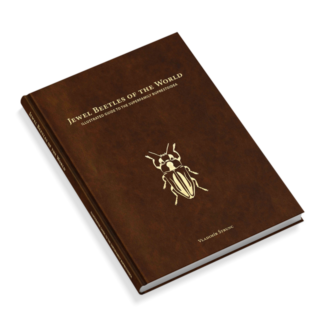 Jewel Beetles of the World€ 105.00
Jewel Beetles of the World€ 105.00
Buprestidae is a large family with over 15,000 described species divided into several subfamilies. Although found all over the world, the greatest diversity of these beetles can be found in tropical regions. Book about Beetles
Are you a student or interested in entomology? Don’t miss the exclusive discounts offered by the author! Contact today for special pricing for students and entomologists – save money and support your curiosity and studies at the same time. Contact us now to take advantage of this opportunity!
You will receive a reply promptly
Book novelties:
Prioninae of the World I., Cerambycidae of the Western Paleartic I. June Bugs,
Types of beetles insects
New E-Book: Ground Beetles, Tiger Beetles, Longhorn Beetles, Jewel Beetles, Stag Beetles, Carpet Beetles, Scarab Beetles, Rhinoceros Beetles, Weevil Beetles, Blister Beetles, Leaf Beetles, Flower Beetles,
Start Shopping, Start Saving – prices from $3 USD
-
 Types of beetles insectsProduct on sale€ 0.00
Types of beetles insectsProduct on sale€ 0.00 -
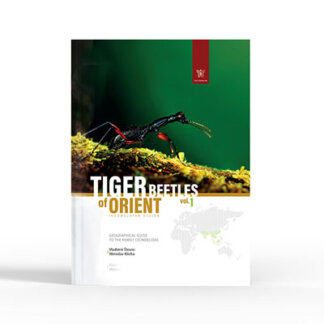 Tiger Beetles of Orient€ 129.00
Tiger Beetles of Orient€ 129.00 -
 Tiger Beetles of Africa€ 129.00
Tiger Beetles of Africa€ 129.00 -
 The Prionids of the World€ 65.00
The Prionids of the World€ 65.00 -
 Ground Beetles of Africa (2nd edition)€ 136.00
Ground Beetles of Africa (2nd edition)€ 136.00 -
 Jewel Beetles of the World€ 105.00
Jewel Beetles of the World€ 105.00 -
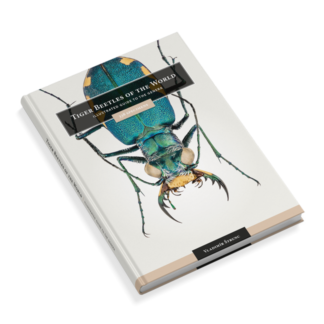 Tiger Beetles of the World€ 99.00
Tiger Beetles of the World€ 99.00 -
 The Prionids of the Neotropical region€ 65.00
The Prionids of the Neotropical region€ 65.00
Unique pictorial atlases for identifying Beetles:
(2020) Tiger Beetles of the World, Cicindelidae, Illustrated guide to the genera
(2023) Tiger Beetles of Africa, Cicindelidae, Geographical guide to the family Cicindelidae
(2024) Tiger Beetles of Orient, Cicindelidae, Geographical guide to the family Cicindelidae
(2022) Ground Beetles of Africa, Afrotropical Region
(2022) Jewel Beetles of the World, Buprestidae, Illustrated guide to the Superfamily Buprestoidea
(2008) The Prionids of the World, Prioninae, Illustrated catalogue of the Beetles
(2010) The Prionids of the Neotropical region, Prioninae, Illustrated catalogue of the Beetles
Their bodies are often covered in various shades of green, blue, red and gold, allowing them to blend in perfectly with their surroundings. Buprestidae is a large family with over 15,000 described species divided into several subfamilies. Although found all over the world, the greatest diversity of these beetles can be found in tropical regions. Book about Beetles
We recommend:
jeweled beetles, ground beetles, longhorn beetles, goliath beetle, stag beetle, carpet beetles
Family Buprestidae
Buprestidae: The Magnificent Jewel Beetles
Unique atlases with photos. Buprestidae, commonly known as jewel beetles or metallic wood-boring beetles, represent one of the most visually striking families in the Coleoptera order. These beetles are renowned for their brilliant iridescent coloration and significant ecological roles in forest ecosystems. The family encompasses approximately 15,500 described species across 775 genera worldwide, with nearly 100 additional fossil species documented. This diverse beetle family faces growing conservation challenges, particularly from climate change and habitat destruction. Current research indicates that many jewel beetle species may experience significant range reductions under future climate scenarios, highlighting urgent conservation needs for these ecologically important insects.
Taxonomy and Classification
Buprestidae belongs to the order Coleoptera within the class Insecta. They are classified under the suborder Polyphaga and infraorder Elateriformia. Within the superfamily Buprestoidea, the Buprestidae family includes several subfamilies, with Agrilinae being one of the most significant.
The taxonomic hierarchy of Buprestidae is well-established within entomological classifications:
Domain: Eukaryota
Kingdom: Animalia
Phylum: Arthropoda
Class: Insecta
Order: Coleoptera
Suborder: Polyphaga
Infraorder: Elateriformia
Superfamily: Buprestoidea
Family: Buprestidae Leach, 1815
The family contains numerous genera distributed across multiple subfamilies. Buprestis, one of the notable genera within the tribe Buprestini and subfamily Buprestinae, comprises approximately 78 described species, occurring across most biogeographic realms except parts of Africa and Antarctica. The evolutionary history of jewel beetles dates back to the Middle Jurassic period, though they became particularly widespread toward the end of the Lower Cretaceous and remained among the most common beetle groups until the Eocene.
Physical Characteristics and Morphology
The jewel beetles earned their common name from their spectacular appearance characterized by metallic, iridescent colors that include vibrant shades of green, blue, and copper. Their body shape is generally cylindrical or elongate to ovoid, with lengths ranging significantly from 3 to 80 mm (0.12 to 3.15 in), though most species measure under 20 mm (0.79 in).
The most striking feature of Buprestidae is their coloration, which, unlike many other colorful insects, does not result from pigments in the exoskeleton. Instead, their iridescence is produced through structural coloration, where microscopic textures in their cuticle selectively reflect specific frequencies of light in particular directions—similar to the optical effect observed in compact discs. This structural adaptation serves multiple purposes, including camouflage, mate attraction, and warning signals to potential predators.
The largest jewel beetle species belong to genera such as Catoxantha, Chrysaspis, Euchroma, and Megaloxantha. In tropical regions, some species like Macrodactylus subspinosus can exceed 100 mm in length, representing the upper size limit for this family. What does jewel beetle eat.
Life Cycle and Ecology
Developmental Stages
The life cycle of jewel beetles follows the complete metamorphosis pattern typical of holometabolous insects, comprising four distinct stages: egg, larva, pupa, and adult. The duration of each stage varies across species and is often influenced by environmental conditions, particularly temperature and humidity.
Larvae of Buprestidae are commonly known as “flatheaded borers” due to their distinctive morphology. These larvae typically develop within plant tissues, particularly wood, where they create galleries as they feed. The larval stage often occurs within decaying wood, where they contribute significantly to nutrient cycling in forest ecosystems.
Feeding Habits and Habitat
Jewel beetles are found in diverse habitats, including forests, grasslands, and even urban areas. Their distribution is strongly influenced by bioclimatic variables, particularly precipitation patterns and temperature seasonality. Research on species like Chalcophora detrita indicates that rainfall during the driest month and temperature seasonality are among the most significant factors determining habitat suitability.
The larvae of jewel beetles bore through various plant tissues, including roots, logs, stems, and leaves of different plant types ranging from trees to grasses. Most wood-boring species prefer dying or dead branches on otherwise healthy trees, though some attack green wood. This feeding behavior categorizes many jewel beetles as saproxylic organisms—those dependent on dead or decaying wood for at least part of their life cycle.
Adult jewel beetles typically emerge in early summer, with mating and egg-laying often occurring during the driest periods of the season. This timing is critical for reproductive success and helps explain why precipitation during dry periods significantly influences their distribution patterns.
Ecological and Economic Significance
Ecological Roles
Jewel beetles serve critical ecological functions in their native habitats. As decomposers, they accelerate the breakdown of dead wood, facilitating nutrient cycling in forest ecosystems. Some species also act as pollinators, contributing to plant reproduction and ecosystem health.
Their sensitivity to environmental changes makes jewel beetles valuable bioindicators for assessing ecosystem health. Population declines may signal habitat degradation or climate change impacts, providing early warnings of broader ecological disruptions. This sensitivity, however, also makes them vulnerable to environmental stressors.
Economic Impact
While most jewel beetles contribute positively to ecosystem functioning, some species are serious pests capable of causing significant economic damage. Wood-boring buprestid species can kill trees, particularly when populations reach outbreak levels. Notable pest species include Agrilus mali, a quarantine apple tree pest, and Agrilus fleischeri, a poplar pest.
Beyond their destructive potential, jewel beetles have cultural and economic value in other contexts. The elytra (wing covers) of certain Buprestidae species have been traditionally used in beetlewing jewelry and decorative art in various Asian countries, including India, Thailand, and Japan. This practice highlights the aesthetic appreciation of these insects across different cultures.
Conservation Challenges and Climate Change Impacts
Climate Change Vulnerability
Recent research indicates that jewel beetles face significant challenges from climate change. Studies on Chalcophora detrita, a polymorphic species distributed across Mediterranean countries, demonstrate that suitable habitats for many jewel beetle species are likely to decrease gradually across their current geographical ranges.
Climate modeling using both optimistic (SSP2-4.5) and pessimistic (SSP5-8.5) scenarios predicts substantial habitat loss for many buprestid species between 2021 and 2100. For example, the subspecies C. detrita detrita and C. detrita marani are projected to experience significant range contractions and habitat fragmentation, while the island-dwelling C. detrita margotana may be somewhat less affected.
Interestingly, bioclimatic variables contribute more significantly to habitat suitability than topographic and land cover variables for many jewel beetle species. This finding emphasizes the direct vulnerability of these beetles to shifting climate patterns rather than just habitat conversion.
Conservation Concerns
Jewel beetles face multiple threats beyond climate change. Deforestation and urbanization directly eliminate suitable habitats, while inappropriate land use practices and forest fires degrade remaining forest areas. These anthropogenic pressures compound the challenges posed by climate change, creating a complex conservation landscape.
Island populations of jewel beetles may experience different conservation outcomes compared to mainland populations. Research suggests that some island populations, such as those in Cyprus and Crete, might be less affected by climate change than their mainland counterparts. However, these island populations often face intensified local threats from human activities due to their restricted ranges.
Notable Genera and Species
The family Buprestidae contains numerous remarkable genera and species, each with distinctive characteristics. The genus Buprestis is widely distributed globally, with 78 described species as of 2011. One particularly well-studied species is Buprestis aurulenta, which exemplifies the typical characteristics of the genus.
Chalcophora detrita represents another significant species within the family. This polymorphic species is distributed across Italy, Albania, Bulgaria, Greece, Turkey, Cyprus, Syria, Israel, and Lebanon. It has evolved into several subspecies, including C. detrita detrita, C. detrita marani, and C. detrita margotana, each adapted to different geographical regions.
The largest jewel beetle species belong to genera such as Catoxantha, Chrysaspis, Euchroma, and Megaloxantha. These impressive insects can reach sizes that make them particularly attractive to collectors and researchers alike.
You can find here: Carabidae, Cerambycidae, Cicindelidae, Scarabaeidae, Lucanidae, Chrysomelidae, Curculionidae, Staphylinidae
buprestidae larvae, buprestidae habitat, buprestidae anatomy, are jewel beetles endangered
Conclusion Family Buprestidae
Buprestidae represents one of the most visually striking and ecologically significant beetle families globally. Their impressive diversity, spanning thousands of species across hundreds of genera, is matched by their ecological importance as decomposers, pollinators, and bioindicators. The structural coloration that gives jewel beetles their characteristic iridescence exemplifies the remarkable adaptations that have evolved within this family.
As climate change and habitat destruction intensify, the conservation of jewel beetles faces growing challenges. Current research predicts significant range contractions for many species, highlighting the urgent need for conservation strategies that account for both present threats and future climate scenarios. Understanding the specific habitat requirements and ecological roles of different jewel beetle species will be crucial for developing effective conservation measures that ensure the persistence of these magnificent insects in natural ecosystems worldwide.
Buprestidae
Beetles in Africa
Buprestidae identification
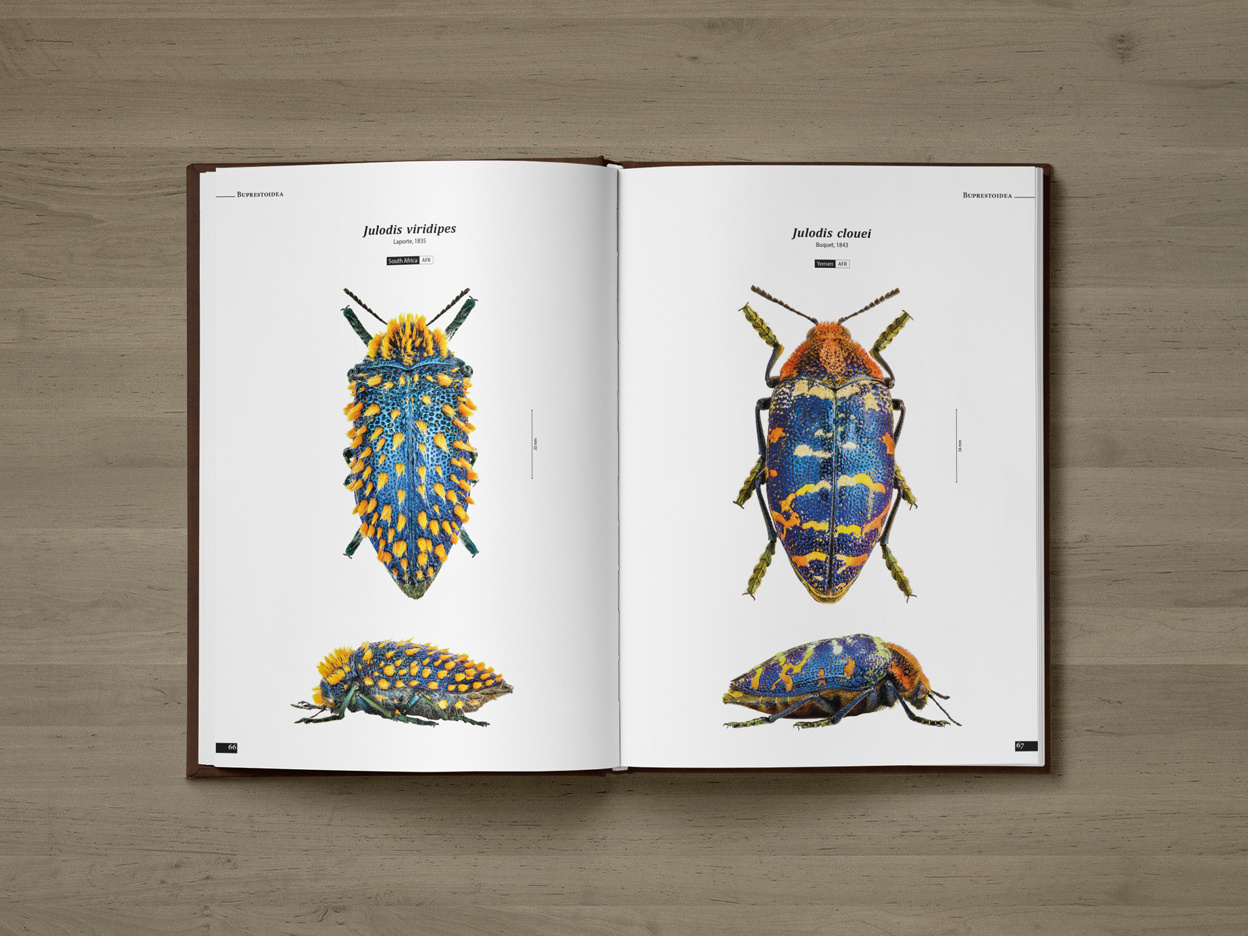
Superfamily Buprestoidea Leach, 1815
Family Schizopodidae J.L. LeConte, 1859
Family Buprestidae Leach, 1815
Subfamily Julodinae Lacordaire, 1857
Subfamily Polycestinae Lacordaire, 1857
Tribe Acmaeoderini Kerremans, 1893
Tribe Astraeini Cobos, 1980
- Tribe Bulini Bellamy, 1995
- Tribe Haplostethini J.L. LeConte, 1861
- Tribe Paratracheini Cobos, 1980
- Tribe Perucolini Cobos, 1980
- Tribe Polycestini Lacordaire, 1857
- Tribe Polyctesini Cobos, 1955
- Tribe Prospherini Cobos, 1980
- Tribe Ptosimini Kerremans, 1903
- Tribe Thrincopygini J.L. LeConte, 1861
- Tribe Tyndaridini Cobos, 1955
- Tribe Xyroscelidini Cobos, 1955
Subfamily Galbellinae Reitter, 1911
Subfamily Chrysochroinae Laporte, 1835
- Tribe Chrysochroini Laporte, 1835
- Tribe Dicercini Gistel, 1848
- Tribe Evidini Tôyama, 1987
- Tribe Paraleptodemini Cobos, 1975
- Tribe Paratassini Bílý & Volkovitsh, 1996
- Tribe Poecilonotini Jakobson, 1913
- Tribe Sphenopterini Lacordaire, 1857
- Tribe Vadonaxiini Descarpentries, 1970
Subfamily Buprestinae Leach, 1815
- Tribe Actenodini Gistel, 1848
- Tribe Anthaxiini Gory & Laporte, 1839
- Tribe Bubastini Obenberger, 1920
- Tribe Buprestini Leach, 1815
- Tribe Chrysobothrini Gory & Laporte, 1836
- Tribe Coomaniellini Bílý, 1974
- Tribe Curidini Holyński, 1988
- Tribe Epistomentini Levey, 1978
- Tribe Exagistini Tôyama, 1987
- Tribe Glaphyropterini Pongrácz, 1935†
- Tribe Julodimorphini Kerremans, 1903
- Tribe Kisanthobiini Richter, 1949
- Tribe Maoraxiini Holyński, 1984
- Tribe Melanophilini Bedel, 1921
- Tribe Melobasini Bílý, 2000
- Tribe Mendizabaliini Cobos, 1968
- Tribe Nascionini Holyński, 1988
- Tribe Phrixiini Cobos, 1975
- Tribe Pterobothrini Volkovitsh, 2001
- Tribe Stigmoderini Lacordaire, 1857
- Tribe Thomassetiini Bellamy, 1987
- Tribe Trigonogeniini Cobos, 1956
- Tribe Xenorhipidini Cobos, 1986
Subfamily Agrilinae Laporte, 1835
- Tribe Agrilini Laporte, 1835
- Tribe Aphanisticini Jacquelin du Val, 1859
- Tribe Coraebini Bedel, 1921
- Tribe Tracheini Laporte, 1835
The Family Buprestidae
One of the characteristic features of wood-boring beetles is their larval stage. The larvae of these beetles live inside the wood of plants and trees and feed on woody material. Depending on the species, the larvae can attack both living trees and dead plant parts.
Adult beetles feed on nectar, pollen and plant leaves. Their activity is highest during the warm summer months when they can be observed mating and laying eggs in suitable host plants. The females have developed a so-called ovipositor, which they use to deposit their eggs in cracks in the bark of trees. Scientists study them from many different angles. One of them is studying their fascinating behaviour and life cycle. The other is to analyse the chemicals in the beetles’ bodies that help them survive in their hostile environment full of predators and parasites.
Jewel beetles
The study of these beetles can provide valuable information about the ecology, evolution and conservation of our planet’s biodiversity. These beetles are often associated with forests, as many species are found in deciduous and coniferous forests. Some species also live on savannas, steppes and deserts. Buprestids are usually active during the day and look for flowers on which to collect nectar.
Buprestidae are also popular objects of collecting. Many people collect these beautiful beetles for their aesthetic appearance and collectible value. However, due to forest loss and habitat degradation, some species are becoming endangered.

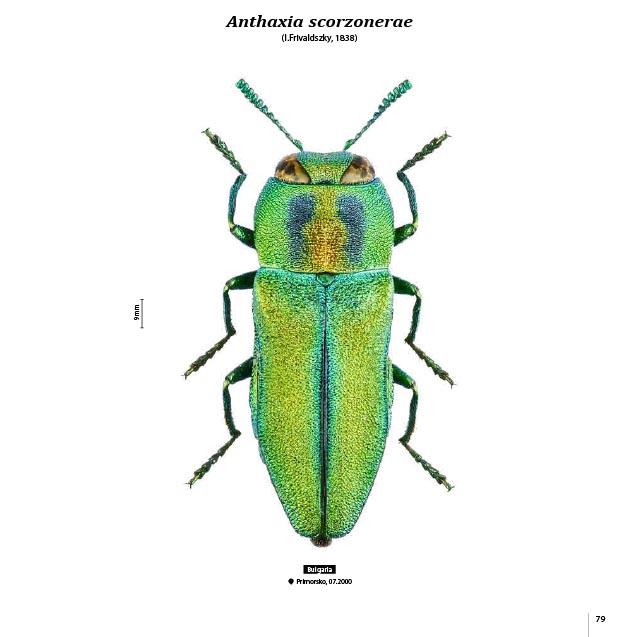

Biology and Distribution
Buprestid beetles, also referred to as buprestidae, buprestidae beetle, or buprestidae beetles, are a diverse group of insects widely recognized for their metallic sheen, which has earned them the common name jewel beetles or jeweled beetles. These insects undergo complete metamorphosis, with buprestid larvae, also called buprestidae larvae, exhibiting unique buprestidae characteristics throughout the buprestidae life cycle.
Taxonomists utilize buprestidae identification methods to classify species such as the buprestid beetle or the buprestis beetle, while the golden buprestid and the golden buprestid beetle stand out as notable representatives of this family. Among the types of jewel beetles are the blue jewel beetle, green jewel beetle, rainbow jewel beetle, purple jewel beetle, gold jewel beetle, golden jewel beetle, red spotted jewel beetle, and the madagascar blue jewel beetle, each demonstrating distinct morphological traits.
Research on the green jewel beetle scientific name, the indian jewel beetle scientific name, and the jewel beetle scientific name has advanced our understanding of their evolutionary relationships, as have comparative studies of the indian jewel beetle and the green jewel beetle. Collectively, these jewel beetle species are found across numerous buprestidae habitat types, prompting the question where do jewel beetles live and where are jewel beetles found, with documented populations in jewel beetle washington state, jewel beetle oregon, jewel beetle california, jewel beetle uk, jewel beetles australia, jewel beetles of taiwan, and jewel beetles of the world.
Current data on the jewel beetle order confirm their classification within Coleoptera, while ongoing research into the jewel beetle insect focuses on how long do jewel beetles live and what do jewel beetles eat, revealing that their jewel beetles diet can vary among species. Entomologists seeking further insights into buprestid beetle larvae investigate the jewel beetle life cycle to answer questions such as what does jewel beetle eat and do jewel beetles bite.
Although some wonder are jewel beetles poisonous, are jewel beetles dangerous, or are jewel beetles harmful to humans, most species pose little threat, though their vibrant exoskeleton often raises curiosity about whether are jewel beetles edible or are jewel beetles harmful. Nevertheless, occasional studies address are jewel bugs poisonous, referencing the jewel bug scientific name and jewel bug price for comparative analyses.
Additionally, conservationists evaluate are jewel beetles endangered, as habitat loss may impact certain populations. Overall, morphological depictions like the jewel beetle diagram and observational resources such as jewel beetle facts or jewel beetles facts highlight the scientific importance of these remarkable insects.
Use in Jewelry and Historical Context
In terms of cultural significance, entomologists and collectors have long noted the popularity of beetle jewelry, particularly when incorporating jewel beetle larvae or jewel beetle wings into ornate designs. During the Victorian era, victorian insect jewellery, victorian bug jewelry, and victorian beetle jewelry were highly prized forms of insect jewelry of the victorian era, reflecting the fascination with insects in jewelry and the distinctive victorian era jewelry characteristics.
These pieces often featured real insect jewelry or real insect jewellery, as well as insects in amber jewelry, showcasing the jewel beetle habitat through preserved specimens that illustrated the intricate beauty of buprestid beetles. Contemporary enthusiasts embrace similar practices by creating jewel beetle jewellery or vintage insect jewelry as part of upcycled vintage jewelry ideas, sometimes using types of vintage plastic jewelry or vintage plastic jewelry types to complement natural elements.
The ongoing maquech beetle jewelry tradition in certain regions even extends to maquech live beetle jewelry, where living specimens serve as wearable art, while beetle jewelry live demonstrations highlight the ethical considerations of using insects in this manner. Modern artisans also experiment with jewel beetle necklace designs, jewel beetle art, and jewel beetle drawing techniques to capture the iridescent sheen of species like the green jewel beetle or gold jewel beetle.
Meanwhile, vintage jewelry ideas and vintage jewelry display ideas draw attention to the historical evolution of what is victorian jewelry, as well as the types of victorian jewelry that gained prominence in the 19th century. Enthusiasts may ponder the jewel and jewelry difference when distinguishing a piece labeled “jewel beetle jewelry” from more conventional ornaments, while the symbolism of these beetles extends to jewel beetle meaning, jewel beetle symbolism, and jewel beetle spiritual meaning in various cultures.
Moreover, the presence of jewel beetle wings for sale raises ethical concerns, prompting questions about sustainable sourcing, whereas novices often inquire what is a jewel beetle to better understand the ecological and aesthetic value of these specimens.
Indeed, the interplay between entomology and design underscores the complexity of displaying the family’s radiance, whether through insect-based brooches or larger-scale exhibitions featuring victorian hand jewelry meaning.
Modern References and Miscellaneous Notes
In modern contexts, jewel beetle references appear in unexpected places, from virtual realms such as jewel beetle acnh and jewel beetle mooncat to artistic creations inspired by jewel beetle sonic motifs. Gamers who encounter the jewel beetle animal crossing often inquire about the jewel beetle animal crossing price, while collectors track the jewel beetle price in international markets and consider the jewel beetle cad value for trading purposes.
Additionally, certain hobbyists keep a jewel beetle pet, and others seek out a jewel beetle for sale or explore jewel beetles for sale listings to expand their personal menageries. Creative professionals may incorporate a jewel beetle paint color or jewel beetle green paint into their palettes to replicate the insects’ metallic sheen, reflecting a broader fascination with jewel beetle paint.
Beyond the digital and commercial spheres, the top hits of a popular musician can intersect with entomological interests in conversations about the jewel top 5 songs, jewel song list, or even a jewelry box song list.
Ultimately, the enduring appeal of these insects in both cultural and scientific circles underscores the breadth of human curiosity, whether one admires the shimmering exoskeleton of a living specimen or ponders the complexities of preserving a historic piece of beetle jewelry within the broader narrative of insects in jewelry.
